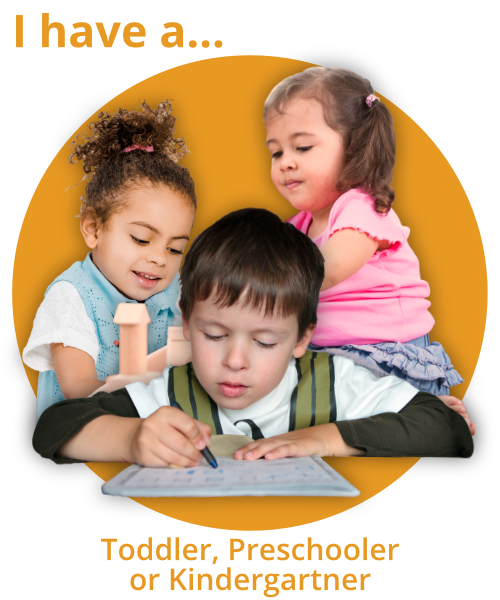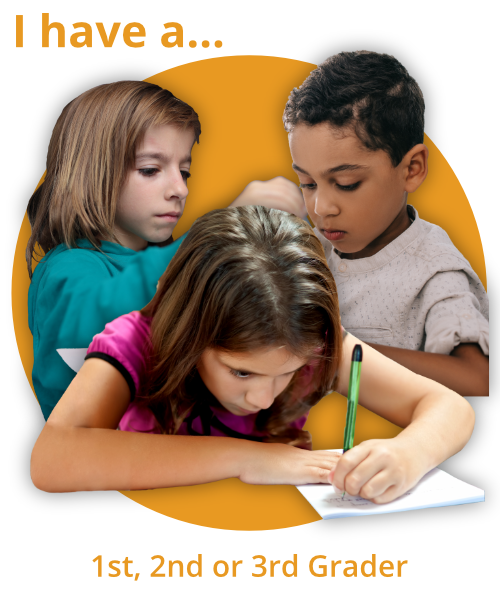I’m Sorry, But It’s Just Not Montessori
The internet is a treasure trove of Montessori goodness.
Finally, after years and years of obscurity in the education field, our little niche is POPULAR. I love it! My goal has always been to make Montessori mainstream, and it’s happening!
But as everyone knows, popularity has its drawbacks. What is popular is not necessarily authentic.
“Montesomething” products are all the rage. Toy-makers and online stores know well that if you put the word “Montessori” in front of your product, it’s likely to have a certain appeal for parents.
And what appeal is that?
Smart. Sophisticated. High quality. Trendy. I can’t blame them for doing it!
Here at Child of the Redwoods, we work hard to help Montessori-loving parents distinguish genuine Montessori materials from the not-so-Montessori products and activities. Sometimes it’s hard to tell.
Here I’ve written down a few of the items I commonly see advertised to parents as “Montessori” that are not actually Montessori items.
Sensory Bins
A big bowl of beans is an invitation to the senses! I had one in my classroom long ago with some hidden objects inside. Oh, how good it feels to me even as an adult! I still stand by this activity for children of all ages.
However, whether a sensory bin is a Montessori thing or not depends on its intended use.
Many sensory bins are intentional combinations of textures, colors, sounds, and smells. You might see a bin suggestion online full of nature items like pinecones sprinkled with cinnamon, pom-pom balls, plastic animals, and a handful of rainbow rice thrown in for good measure.
This is the opposite of the Montessori approach because it easily overwhelms the child.
A tip from me to you: If you offer a bin of...stuff...try to isolate the senses.
Play Kitchens
Cabinets to open and close and tiny utensils to sort and bang together and put objects (like play food) into offers many opportunities for the child’s natural development.
But if you ask us Montessorians, we will tell you that those opportunities all exist in your regular kitchen space if you simply allow your child to cook with you and get items out of your cabinets.
Making food preparation skill development consistently available to your child satiates the need to play more than any play kitchen ever could.
Play Sinks
A few years back the Montessori internet communities blew up with excited photos of this plastic play sink from big box stores that recycles water from the “drain” back up to the spout and down again.
It seems Montessori because we obviously love it when children are offered more ways to be independent. Washing hands can be tough at a big sink way up high for little hands. The plastic sink seems to encourage this kind of independence, and yet I have some big concerns.
First, the re-used water does not offer children a truly sanitary washing experience. Beware of the potential bacteria colonies hanging out at the bottom and being recycled up to the top.
Second, children can have a world of fun in their own bathtubs, playing in a real sink by using a stool or learning tower, or simply with a plain, cheap plastic tub filled with water.
There is no need to buy a child a toy that looks like the real thing yet does not perform as well as the real thing. Want to do it the Montessori way? Just use the real thing!
Busy Boards
In order to teach children certain practical life skills, we often isolate them and allow children to practice repeatedly. We offer dressing frames so that children can learn how to button, tie, and zip. We offer screwdrivers and screws so that children can learn how to use this tool. We give a child a flashlight and encourage the batteries to be taken out and put back in.
These Montessori-aligned activites also benefit the child by strengthening the hand and refining the pincer grip. It’s lovely.
Sometimes online (and in products) I see this practical life emphasis taken to an extreme. Instead of a carefully constructed, focused skill-based toy, like the “lock box”, I see a big wooden board with a million things to ding, crank, zip, shake, fasten, and the like.
It’s probably not terrible for a child, and I can definitely imagine how much fun it would be for an adult to make, but it’s simply not how we would present these skills in Montessori.
Busy Books
Often made of fabric and other crafty scraps, busy books invite children to practice their fine motor skills while in a car or on a long plane ride.
There’s really nothing wrong with them if appropriately constructed, but in Montessori, we generally prefer that these fine motor skills be practiced in a more direct, separate way that leads the child to doing real work in real life.
We also resent the idea that children need to be “kept busy”. Let them find their own fun!
Random Stuff Made of Wood
Is it made of wood? That’s good! We like natural materials.
Wood can feel good in the hand and mouth (if teething). It can also often be environmentally sustainable (unlike plastic). But just because something is made of wood doesn’t mean it’s Montessori!
I’d personally choose a plastic toy that is beautiful, appeals to the child’s sense of order, and isolates a certain quality over a wooden toy that confuses the eye, “teaches” many concepts at one time, and is made with questionable paint that chips off easily. That’s the way we look at toys from the Montessori perspective.
Rainbows
Hey, we love a good rainbow like everyone else!
In my home, you’ll see a prism hanging by the window and a rainbow stacker on the shelf to play with...but that doesn’t mean that a pretty, rainbow-colored toy is a Montessori “thing”.
It might add to the aesthetic nature of the “prepared environment”, and it might be a high-quality toy itself that is Montessori compatible, but don’t fixate on those rainbows as an essential. They aren’t!
Teepee Tents
I don’t know why these took the early childhood product market by storm, but I’m going to be very clear here. There is nothing specifically “Montessori” about a teepee tent. They are a decorative item sold online and in local stores for children’s bedrooms.
Do you have one already? Listen up. The Native Peoples / indigenous community online have been extremely vocal that this is cultural appropriation.
It is my personal opinion and high hope that most parents do not know this (otherwise they would not be purchasing them). Please do your research on this topic.
Reading nooks, home-made forts, pop-up tents and other ways to give children a little space of their own are all Montessori compatible as a part of the “prepared environment”.
Waldorf Crafts
When my children were little and I decided to stay at home with them, I found myself needing to be crafty. Enter: Waldorf.
I did it all, friends. The peg dolls, the rainbows, the gnomes, the beeswax, the wet-on-wet watercoloring, the homemade playsilks, and even the wool needle felting.
It was really good for me, and it was fun for my child to participate with me, so it was part of our lives, but...that crafty stuff isn’t “Montessori”. It can be very well aligned, but again, it depends heavily on your purpose for including it.
Educational Posters
If there were a big red-flag that screamed “not Montessori”, it would be in the form of an educational poster!
Donate these or recycle them and go for some pretty artwork hung down low so your child can see them, okay?
There is no need to hang something on the wall. If you want to teach your child a specific skill or developmentally appropriate abstract idea, use the three period lesson with some real objects.
House Floorbeds
The adorable “house” floor bed is a great example of a Montessori principle (floor beds) that went bananas on Pinterest and Instagram. Instead of simply putting a mattress on the floor like I did, parents are trying to one-up each other with the cuteness factor.
I cannot deny that they are cute! Montessori, they are not.
Want a Montessori floor bed? Go simple. Either put the mattress on the floor directly, or, if you are concerned about mold/mildew, on a very low platform frame that takes it just barely off the ground.
I know it seems like less fun, and you will not win the extra likes on IG, but your child will be super happy to be able to get in and out of bed independently, and that is the Montessori point.
Pikler Triangles
Gross motor skill equipment is wonderful for children of all ages! Small ladders, slides, stairs, big pieces of foam to crawl up and roll down…you might find any of these in a Montessori environment prepared for babies and toddlers.
The pikler triangle is one such piece of equipment that may nurture a child’s physical development.
It’s on this list because while cool, the origin is not from the Maria Montessori legacy: it’s from the Emmi Pikler legacy, who was the inspiration for Magda Gerber’s work. Gerber is the founder of the RIE (Resources for Infant Educarers) organization. Many Montessorians find RIE compatible with the Montessori approach to working with infants and toddlers.
So let’s give credit where credit is due, eh?
Alphabet Toys for Children Under Two
As we mentioned earlier, adding “educational value” to a toy in an obvious way gets more sales. There is absolutely no reason why children under the age of two need the letters of the alphabet or numbers randomly placed on their toys.
In fact, it’s unnecessarily distracting from what your little baby or toddler is trying to learn right now. The alphabet can come later. Right now, life is all about those gross and fine motor skills. Don’t clutter it up with letters.
Later, when your child is ready to learn to read (typically age 3 at the earliest), I strongly suggest you invest in or make a set of tactile “sandpaper” letters, a sand tray, and a moveable alphabet.
That’s the real way to teach reading in Montessori.
Want to teach Montessori math? Wait until they’re four!
Now You Know
If some of the toys or products are your child’s favorites (or your favorites) just because they aren’t technically Montessori does not mean that they cannot have a place in your Montessori-inspired home.
As your child’s guide, you can make decisions about what aids development and what doesn’t! Trust your instincts.


